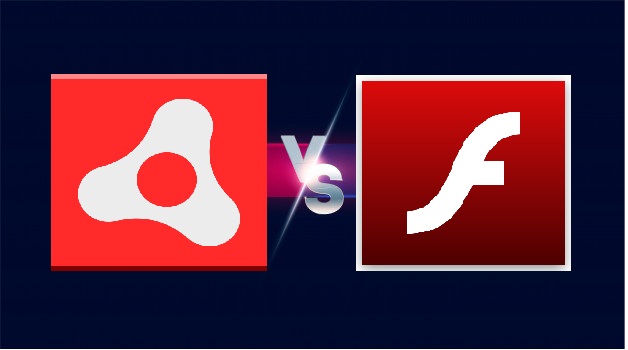If you use the Internet regularly, you will probably find the terms “Adobe Flash Player” and “Adobe AIR”. You are likely familiar with the first one, especially if you love watching videos and playing games on the web, but you may not know much about the second. If this can be the case, this guide is for you.
Table of Contents
Basic information about Adobe Integrated Runtime
Adobe AIR, also known as Adobe Integrated Runtime, is a runtime system used by programmers to create applications for mobile and desktop devices. Individually, these applications can run on iOS, Android and BlackBerry Tablet OS for mobile and macOS devices and Microsoft Windows for laptops and desktops. Adobe AIR used to be compatible with Linux and BlackBerry 10, but this was suspended in recent years. Applications created in AIR are programmed with Flash Player, ActionScript, etc.
Flash Player vs. Adobe Integrated Runtime
Adobe Integrated Runtime (AIR) is a superset of Adobe Flash Player, but they are different in that.
Flash Player is a plug-in for a browser that supports content within the browser, while AIR helps content that runs outside of web browsers and can use without them.
Installation is not required for Applications developed for Flash Player before they can be used; As long as you have an open web browser, that you install them on your system or mobile device can behave like native applications.
It means that Flash-based applications only have access to selected individual files, while AIR-based applications have unrestricted access to all of their data and storage systems.
Also Read: What is the RARP?
Pros and Cons:
Both undeniably have pros and cons. Since they act like native applications, AIR applications are usually more stable and can be accessed even if you don’t have an Internet connection (depending on the application). However, before you can use them, you must download the installer files and install the appropriate programs (for laptops and desktops) or obtain the application in the corresponding application store (for mobile devices).
It requires several minutes, unlike Flash-based content, which can access quickly with just a few clicks.
Even so, in many cases, applications developed in Adobe AIR stand out because they can integrate more tools and features that are not viable in browser-based content. Means that they can provide users with a more productive and more satisfying experience. AIR-based applications, for example, can easily access the GPS and accelerometer tools of your smartphone, integrate with your Dock or taskbar, and take advantage of the multi-touch capability of your device.
Working as a Team
Although, it is essential to keep in mind that Adobe AIR and Flash Player do not work exactly independently. In many cases, they work together to look after that content can move smoothly between the device’s native operating system and browsers and create an efficient and optimized user experience.
Adobe AIR also uses Flash Player technologies to accurately deliver sophisticated Internet applications to desktop computers and mobile devices.
In terms of security, each Adobe AIR and Flash Player have multiple vulnerabilities. However, it’s better to say that the latter has a higher risk. Check this post to learn more about Flash Player vulnerabilities and security issues.
TheITbase
Related posts
Hot Topics
Metaverse Platforms for Virtual Workspaces
Ever felt like your office is stuck in the Stone Age? Tired of endless Zoom calls that feel about as…
IoT Protocols: The Language of Smart Devices
Ever wonder how your smart fridge talks to your phone? Or how does your fitness tracker know to buzz when…



